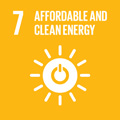- Docente: Lorenzo Rinaldi
- Credits: 9
- SSD: FIS/01
- Language: Italian
- Moduli: Lorenzo Rinaldi (Modulo 1) Lorenzo Piroli (Modulo 2)
- Teaching Mode: Traditional lectures (Modulo 1) Traditional lectures (Modulo 2)
- Campus: Bologna
- Corso: First cycle degree programme (L) in Computer Engineering (cod. 9254)
-
from Sep 18, 2024 to Dec 20, 2024
-
from Sep 19, 2024 to Oct 24, 2024
Learning outcomes
Education in the scientific-experimental method; the meaning of the fundamental physical concepts concerning the principles of the mechanics of the point mass; the ability to apply such principles in solving simple physical problems.
Course contents
Introduction to the course
Physics as an experimental science. Physical laws. Physical quantities and their measurements: units and dimensions.
Kinematics
Concepts of space and time. Reference frames. Material point. Trajectory. Parametric equations of motion. Time law. Position, velocity, and acceleration vectors in Cartesian coordinates, polar coordinates, and intrinsic representation. Angular velocity and acceleration.
Dynamics
Concept of force. Weight force. Static measurement of forces. Inertial reference frames. Galilean transformations. The First Principle of dynamics. The Second Principle of dynamics. Support reactions. Study of some simple problems of dynamics of the point mass (motion with elastic force, projectile motion, simple pendulum, motion with friction forces, gravitational force).
Work and energy
Concept of work. Examples of work calculation. Power. Kinetic energy. Work-energy theorem. Potential energy and conservative fields. Conservation of mechanical energy. Non-conservative forces. Examples: calculation of the potential of weight force, elastic force, gravitational force.
Dynamics of systems of points
The third Principle of dynamics (conservation of momentum and angular momentum). Momentum and angular momentum. Impulse of a force. Impulse-momentum theorem. Collisions and impulsive forces. Cardinal equations. Brief outlines of the dynamics of the rigid body.
Electrostatics in vacuum
Triboelectricity. Brief outlines of the structure of matter. Electric charge. Coulomb's law. Definition of electric field and its vector aspects: field lines, field sources. Gauss's law in integral and differential form. The electric field as a conservative field: the electrostatic potential. Electrostatic energy density associated with the electric field. Energy of a system of point charges and a continuous charge distribution. Brief outlines of the electric dipole.
Electrostatics with conductors
Conductors and insulators. Electric field inside a conductor. Electrostatic induction. Conductors in equilibrium, hollow conductors, field and charges on the surface of the conductor. Electrostatic shielding. Electrostatic capacity. Capacity calculations: plane, cylindrical, and spherical capacitor. Brief outlines of
electrostatics with dielectrics.
Electric current
Conduction and electric current. Definition of current intensity and unit of measure. Current density vector. Charge conservation law: continuity equation. The two Ohm's laws: resistance and resistivity. Joule effect.
Magnetic fields in vacuum in the stationary case
Magnetic interaction. Magnetic field lines. Gauss's law for the magnetic field. Laplace's second law: magnetic force on a current-carrying conductor. Lorentz force on a moving charge. Mechanical moments on plane circuits. Magnetic dipole moment of the coil. Potential energy of the coil in an external magnetic field. Equivalence between the current-carrying coil and a permanent magnet.
Stationary magnetic fields generated by currents
Laplace's first law or Biot-Savart: magnetic field generated by a current. Calculations of magnetic fields produced by elementary circuits. Ampère's law. Magnetic field in an indefinite solenoid. Properties of the magnetic field in vacuum. Brief outlines of
magnetic materials.
Time-varying magnetic and electric fields
Electromagnetic induction and Faraday-Neumann's law. Lenz's law and energy conservation. Applications of Faraday-Neumann-Lenz's law. Self-induction and Inductances. Magnetic energy. Displacement current and Ampère-Maxwell's law.
Maxwell's equations
Discussion of Maxwell's equations in integral and differential form. Brief outlines of electromagnetic waves and the energetic aspects of the electromagnetic field.
Readings/Bibliography
S. Focardi, I. Massa, A. Uguzzoni "Fisica Generale - Meccanica", Casa Editrice Ambrosiana
S. Focardi, I. Massa, A. Uguzzoni, Villa "Fisica Generale - Elettromagnetismo", Casa Editrice Ambrosiana
Fundamentals of Physics (any edition) by David Halliday, Robert Resnick and Jearl Walker
Teaching methods
Frontal lectures and classroom exercises. Slides, electronic board, and traditional blackboard are used
Assessment methods
The assessment takes place through a mandatory written test and an optional oral examination.
It is mandatory to register for the exams on AlmaEsami. For each type of exam, there are three rounds in winter, two in summer, and one in autumn.
The written test consists of 4 exercises of the same type as those covered in the lessons and 2 questions on theoretical topics. The time available is two hours.
During the written tests, the use of a pen (NO pencil), drawing tools (ruler, set square, ...) and a non-programmable scientific calculator is allowed. Paper will be provided by the committee. The use of books, personal notes, mobile phones, smartphones, tablets, etc., is not allowed.
The written test is passed with a score of 18/30 or higher. The maximum score that can be awarded with the written test is 27/30.
Once the written test is passed, you can choose whether to record the written score or to take the oral exam. If you take the oral exam, the final grade may increase or decrease by 5 points (honors will be awarded at the discretion of the examining board).
It will be possible to take the oral exam within the session. If you wish to repeat a written test, the previous score is canceled upon submission of the work.
Teaching tools
The educational material (lecture slides, exercises) is published on the Virtual service
Office hours
See the website of Lorenzo Rinaldi
See the website of Lorenzo Piroli
SDGs




This teaching activity contributes to the achievement of the Sustainable Development Goals of the UN 2030 Agenda.
